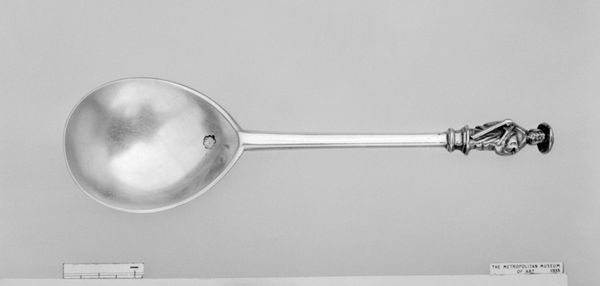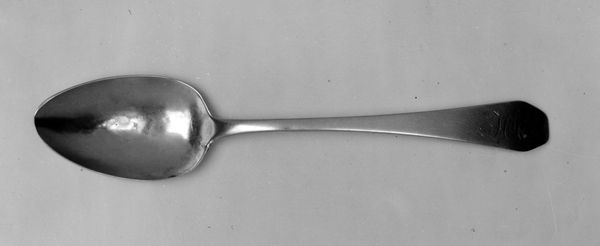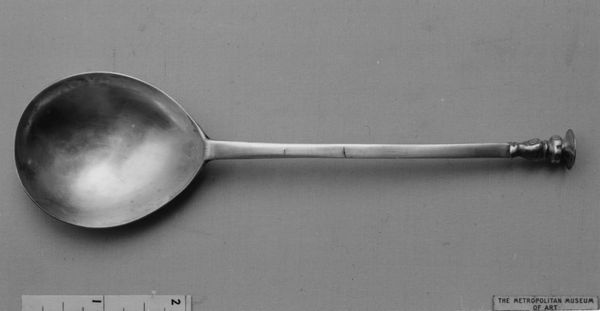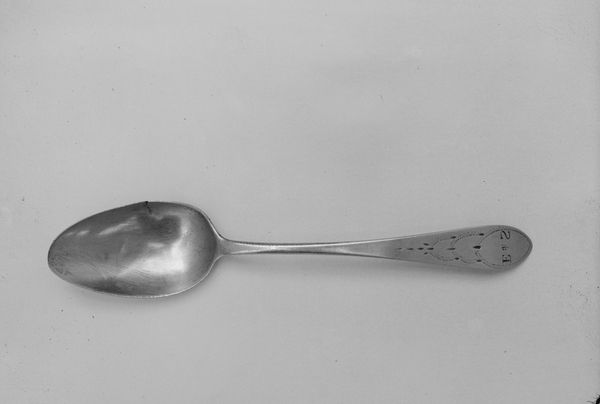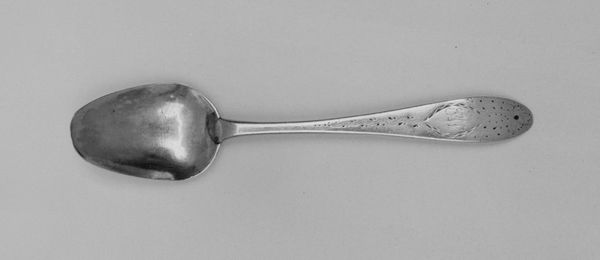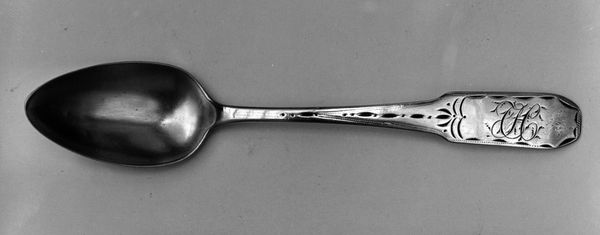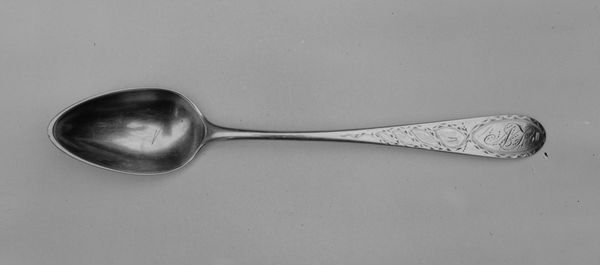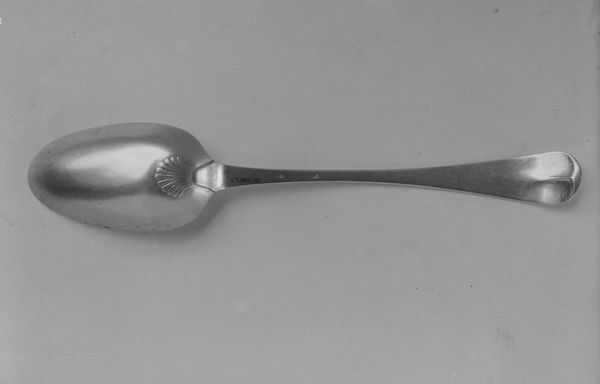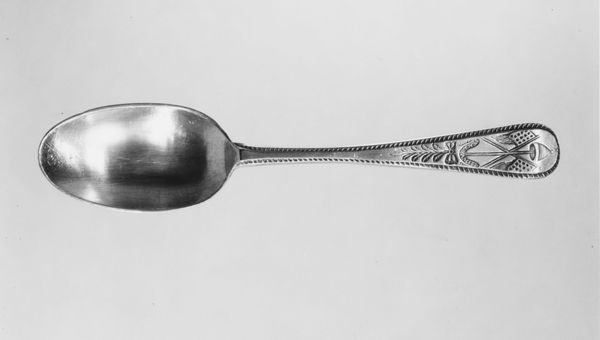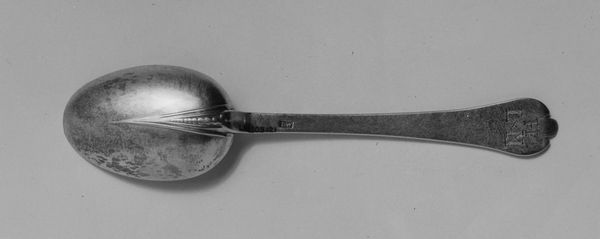
silver, metal, sculpture
#
medieval
#
silver
#
metal
#
form
#
sculpture
#
decorative-art
Dimensions: 5 7/8 × 1 7/8 in. (14.9 × 4.8 cm)
Copyright: Public Domain
Robert Beckwith made this seal-top spoon from silver, most likely in England in the late 16th or early 17th century. Spoons like this one were common christening gifts for children of wealthy families and would have been among their most prized possessions. In a time when most people ate with their hands or knives, the spoon reflects the emergence of table manners among the upper classes. Owning personal cutlery signaled status and refinement, setting them apart from the masses. London's Goldsmiths' Company, established centuries earlier, held significant power, dictating standards for silver quality and design through hallmarks. The "seal" at the end wasn't just decorative; it was a personal stamp, pressed into wax to seal letters or documents, linking the spoon's owner to literacy and authority. To fully grasp the spoon's significance, we can delve into estate records, guild archives, and etiquette manuals of the period. These resources paint a vivid picture of social aspirations, material culture, and the evolving rituals of dining in early modern England.
Comments
No comments
Be the first to comment and join the conversation on the ultimate creative platform.
